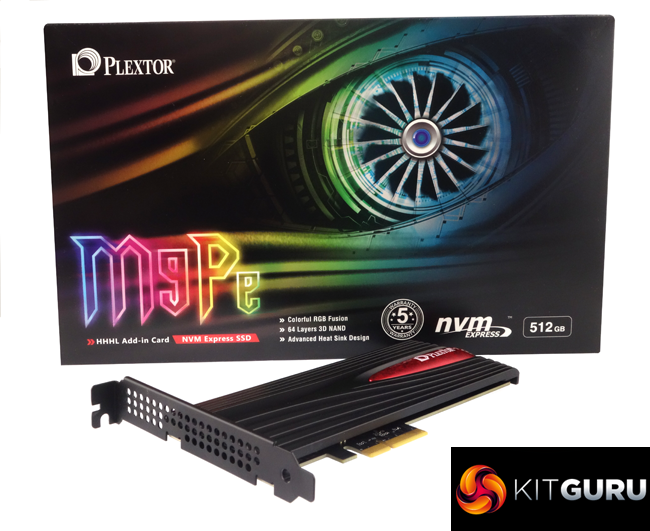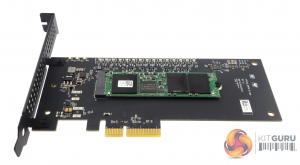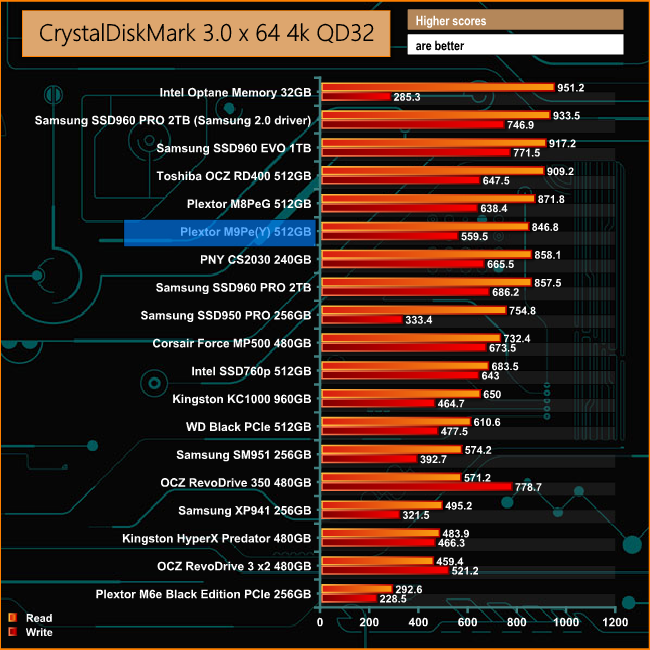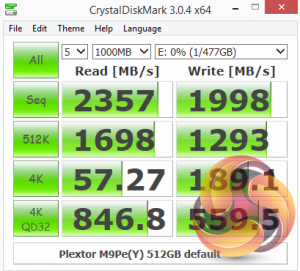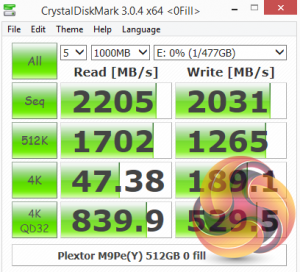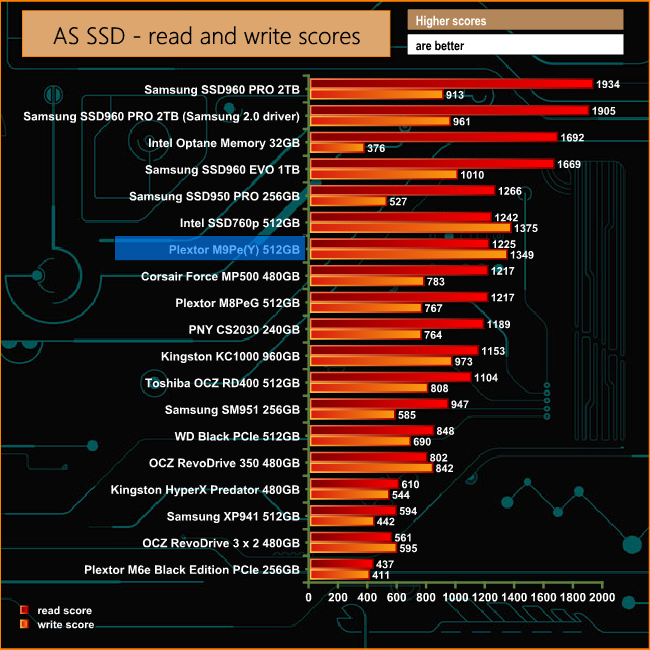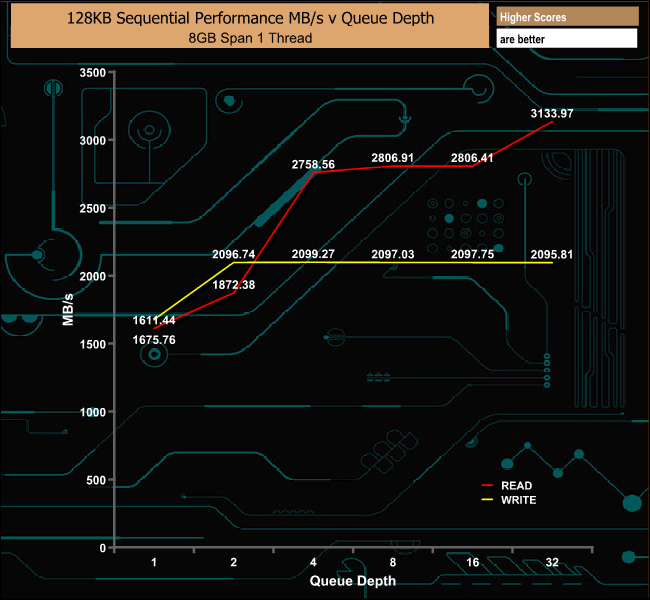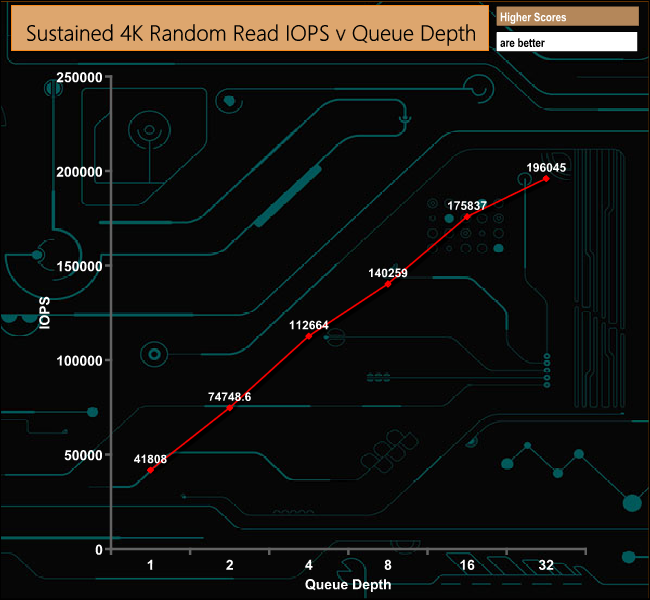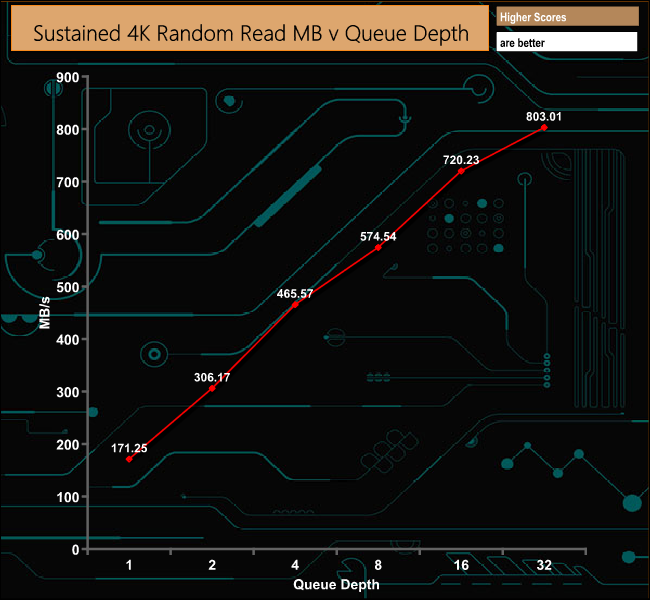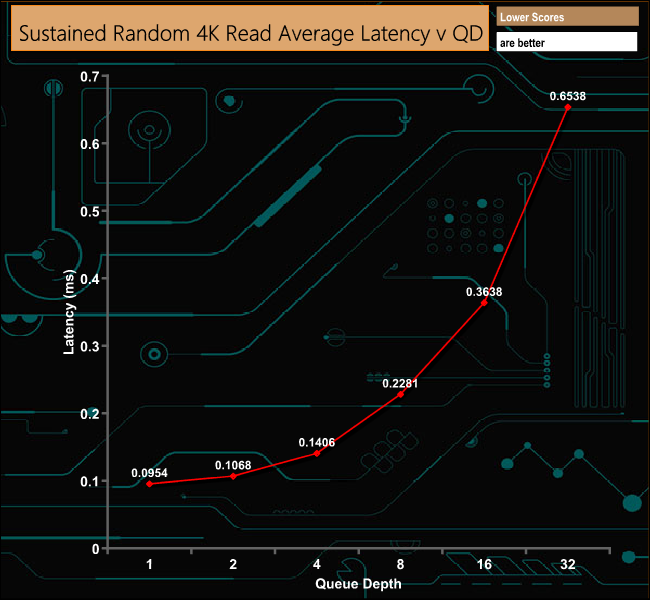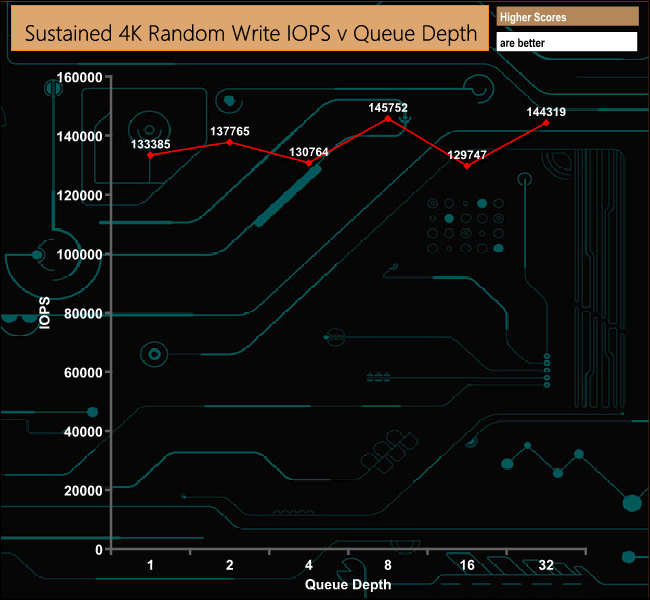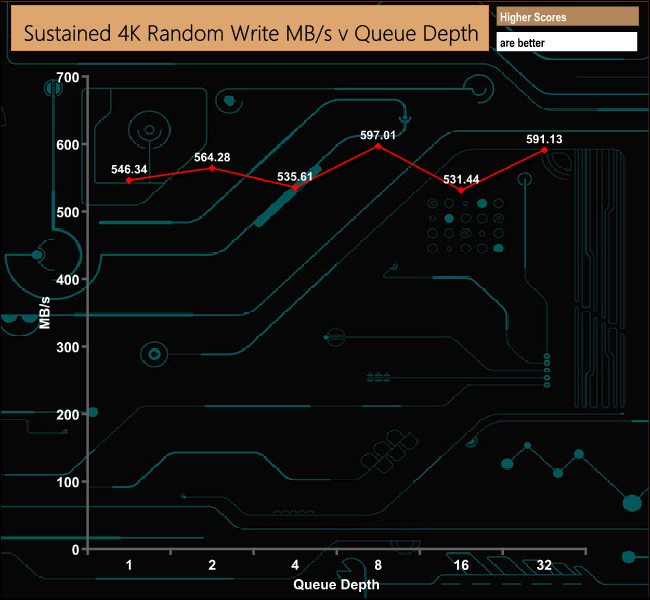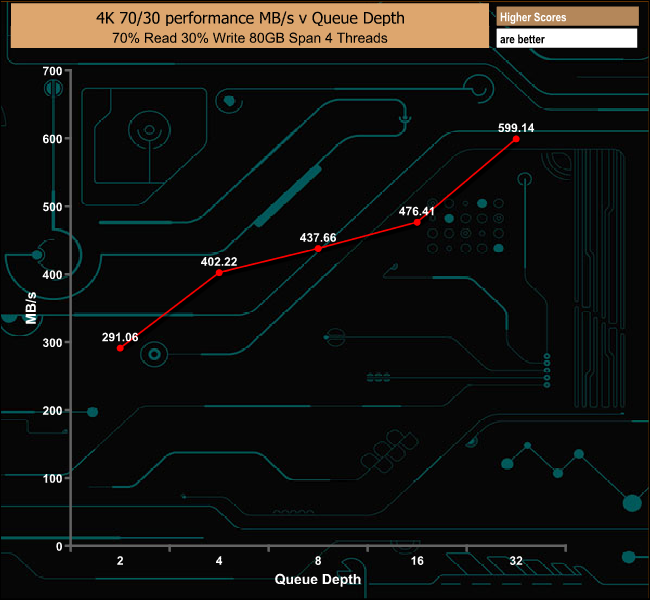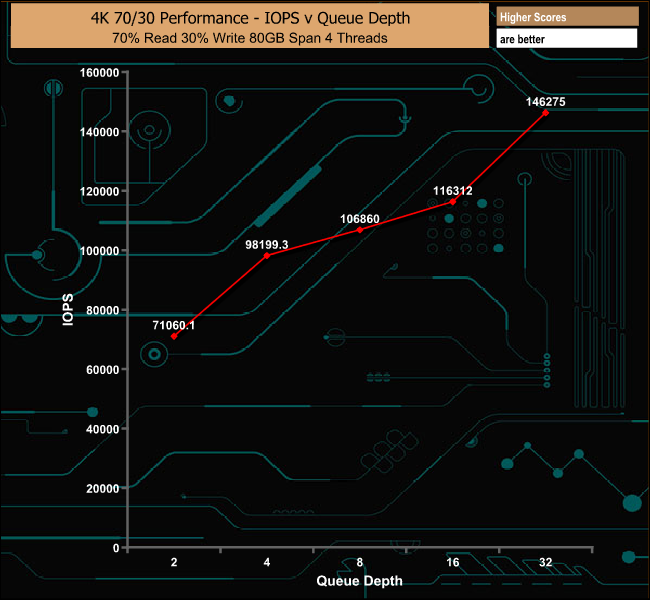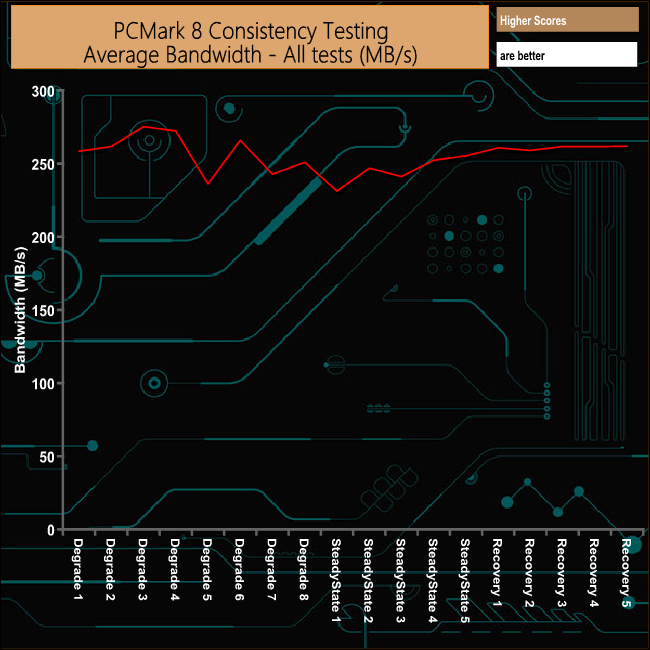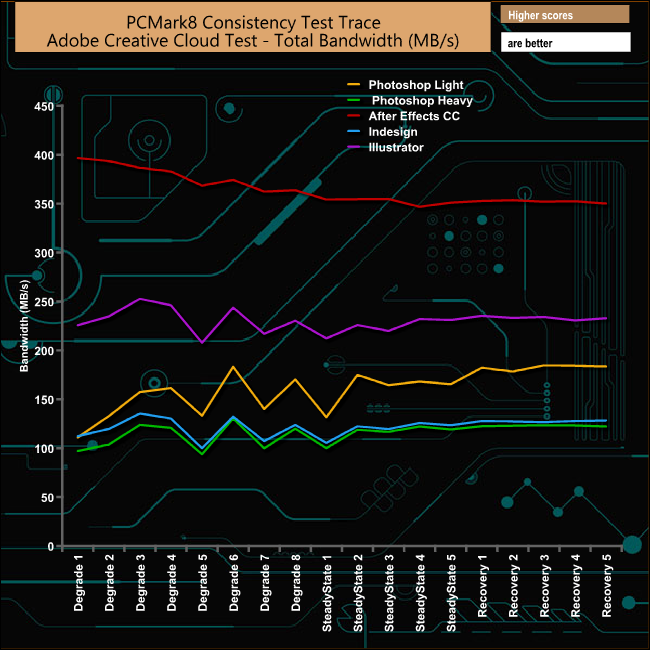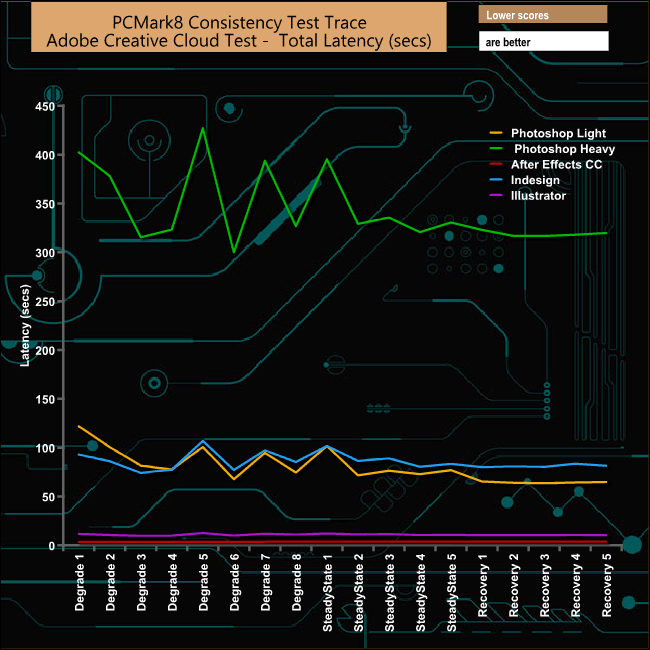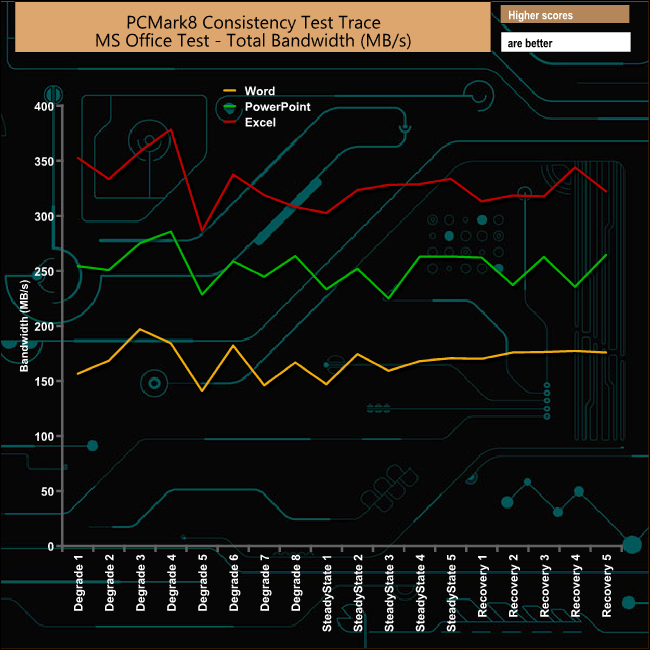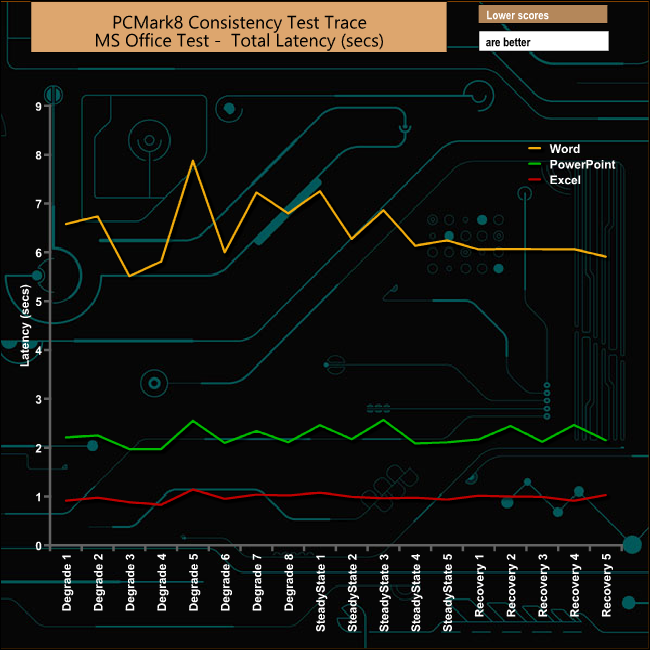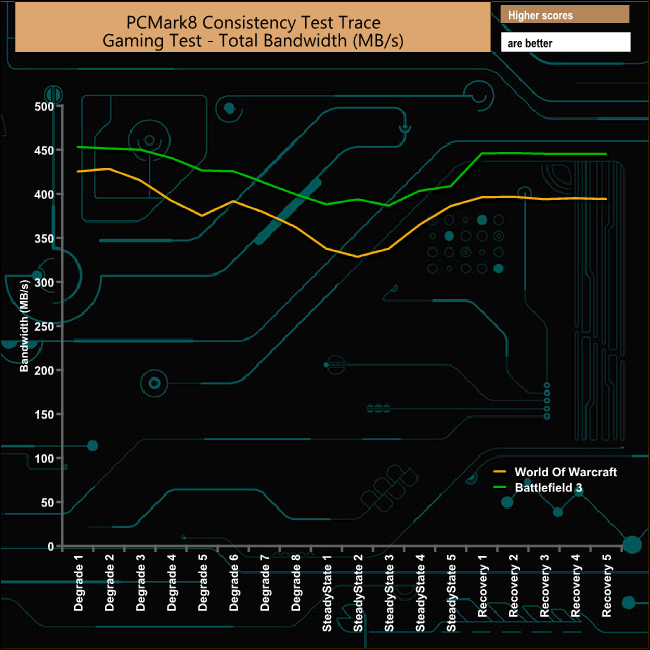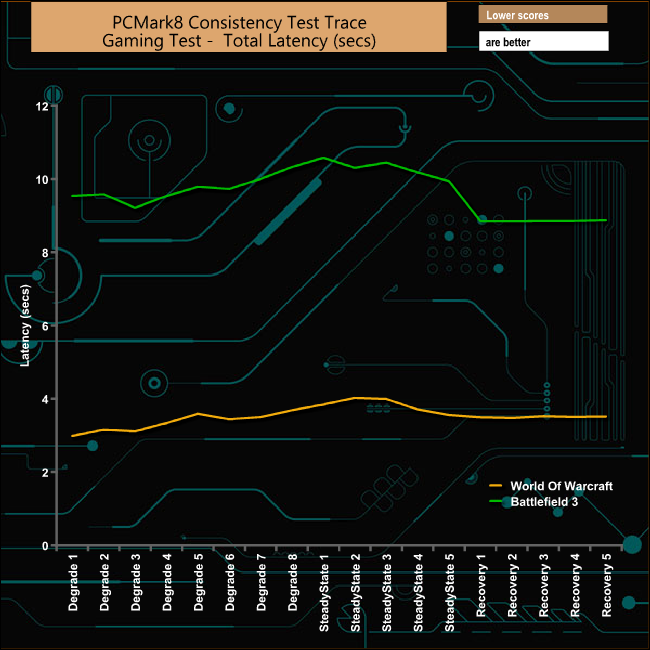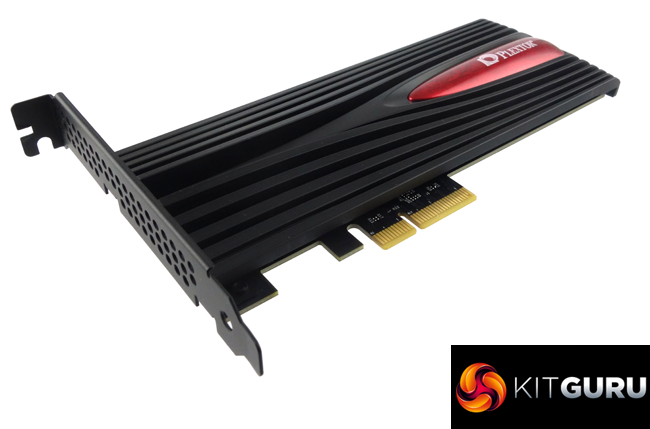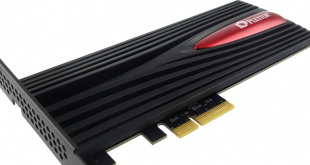
Plextor's latest NVMe SSD family is the M9 and as with the previous generation M8 drive series, the M9 comes in three versions, two M.2 drives and the HHHL version we are reviewing here.
The two M.2 versions are the M9Pe(G) which comes with a black and red design heatsink on it and the M9PeGN, a bare drive without the heatsink. The M9Pe(Y) HHHL (Half Height Half Length) drive we are reviewing has the same red and black design heatsink as the M9PeGN only much larger obviously. Capacity wise there are just three for all three versions of the M9; 256GB, 512GB and the flagship 1TB drives.
The drives use Toshiba BiCS3 64-layer 3D TLC NAND looked after by a Marvell 88SS1093 8-channel controller. The 88SS1093 uses 3rd-genaration Marvell LDPC technology for reliability enhancement and endurance boost for 3D TLC NAND.
Official performance figures for the drive are the same per capacity across the range. The 256GB drive is up to 3,000MB/s & 1,000MB/s for Sequential reads and writes respectively, the 512GB and 1TB drives are rated at up to 3,200MB/s for Sequential reads while Sequential writes come in at up 2,000MB/s for the 512GB drive and 2,100MB/s for the 1TB model.
Random read performance is quoted as up to 180,000 IOPS for the 256GB drive, up 340,000 IOPS for the 512GB drive and 400,000 for the 1TB drive. The 256GB drive is rated as up to 160,000 IOPS for random reads, the 512GB drive 280,000 IOPS and the 1TB drive 300,000 IOPS.
The M9Pe(Y) has another trick up its sleeve or heatsink, it's an RGB design, the first RGB SSD. Power it up and displays Red and then when in standby it slowly cycles through its range of colours. Once the drive is actively reading or writing then you get the full RGB effect. It your're not a fan of RGB then tough because at the time this review was written there is no way of turning it off. Hopefully some kind of control for it will be built into a future version of Plextor's Plextool management software.
Plextor quote endurance figures for the 512GB drive at 320 TBW and back the drive with a five year warranty.
Physical Specifications:
Usable Capacities:
NAND Components: Toshiba BiCS3 64-layer 3D TLC NAND.
NAND Controller: Marvell 88ss1093
Cache: 512MB LPDDR3
Interface: PCIe Gen 3 x4 NVMe
Form Factor: HHHL
Dimensions: 176.33 x 121.04 x 22.39mm
Drive Weight: 200g
Firmware Version: 1.03
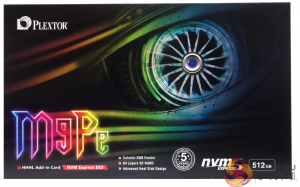
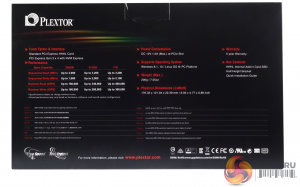
Plextor's M9Pe(Y) comes is a large box more akin to what you might find a graphics card in rather than a hard drive. The M9Pe branding on the front of the box is coloured using the same colours of the RGB, neat bit of marketing that. Under this are descriptions of some of the drives features; HHHL Add-in card, NVMe SSD, RGB Fusion, 64-layer 3D NAND, advanced heat sink design, the fact the drive is backed by a 5 year warranty and its capacity.
The back of the box has a performance panel that lists Sequential and Random performance figures for all the drives in the range. To the right of this is a small specification list.
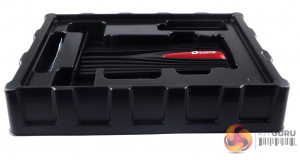
The drive sits safely in an inner plastic tray that has seperate compartments for all the supplied components and the tray has a tight fitting clear plastic cover to keep everything snuggly in place.
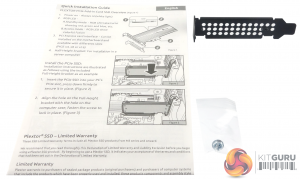
The box bundle consists of a installation booklet, half-length PCI bracket and a fixing screw.
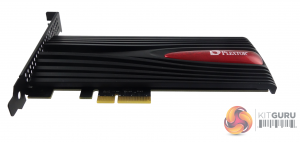
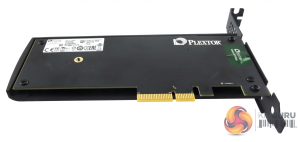
The front of the PCB is totally covered by the passive heatsink, which uses fairly deep cut cooling fins to help keep the drive cool.
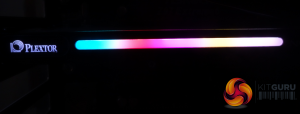
Not only does the drive have an RGB panel in the side of the heatsink, the Plextor logo on the same side is lit in a blueish white colour.
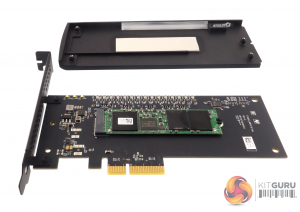
Once the four screws holding the heatsink in place are removed (one is under the warranty sticker, so undoing it breaks the warranty). The black PCB is home to a M.2 2280 drive.
The single sided 512GB M.2 PCB holds two packages of Toshiba BiCS3 64-layer 3D TLC NAND, a single 512MB LPDDR3 cache IC and the Marvell 88SS1093 controller. The Marvell 88SSs1093 is a 8-channel controller using a triple ARM Cortex R5 design running up to 500MHz.
It supports PCIe Gen 3 x 4 lanes and the NVMe 1.1b spec and uses 3rd-genaration Marvell LDPC technology to enhance reliability and boost endurance for 15/16nm MLC/TLC and 3D NAND. To protect data it has an AES 256 encryption engine supporting TCG standards.
For testing, the drives are all wiped and reset to factory settings by HDDerase V4. We try to use free or easily available programs and some real world testing so you can compare our findings against your own system.
This is a good way to measure potential upgrade benefits.
We are in the process of updating our testing procedures for NVMe SSD’s adding new tests, refining others and using the latest versions of CrystalDiskMark, ATTO and AS SSD benchmarks. For a time we will show both old and new screenshots of these benchmarks as we transition from the older tests to the newer ones.
We will try and re-test as many of the previously reviewed NVMe drives as we can so as to build up new versions of our comparative performance graphs.
The test setup’s for the new tests are listed below. Each is run five times.
128KB Sequential Read / Write.
Transfer Request Size: 128KB Span: 8GB Thread(s): 1 Outstanding I/O: 1-32 Test Run: 20 minutes per test
4K Sustained Random Read / Write.
Transfer Request Size: 4KB Span: 80GB Thread(s): 4 Outstanding I/O: 1-32 Test Run: 20 minutes per test
4K Random 70/30 mix Read/Write.
Transfer Request Size: 4KB Span: 80GB Reads: 70% Writes: 30% Thread(s): 4 Outstanding I/O: 2 – 32 Test Run: 20 minutes
Main system:
Intel Core i7-7700K with 16GB of DDR4-3200 RAM, Sapphire R9 390 Nitro and an Asus Prime Z270-A motherboard.
Other drives:
Corsair Force MP500 480GB
Corsair Neutron NX500 800GB
Intel Optane Memory 32GB
Intel SSD760p 512GB
Kingston HyperX Predator 480GB
Kingston KC1000 960GB
OCZ RevoDrive 350 480GB
OCZ RevoDrive 3 x2 480GB
Patriot Hellfire 240GB
Plextor M8PeG 512GB
Plextor M6e Black Edition PCIe 256GB
PNY CS2030 240GB
Samsung SSD960 PRO 2TB
Samsung SSD960 EVO 1TB
Samsung SSD950 PRO 256GB
Samsung SM951 256GB
Samsung XP941 512GB
Toshiba OCZ RD400 512GB
Western Digital Black PCIe 512GB
Software:
Atto Disk Benchmark.
CrystalMark 3.0.3.
AS SSD.
IOMeter.
Futuremark PC Mark 8.
All our results were achieved by running each test five times with every configuration this ensures that any glitches are removed from the results. Trim is confirmed as running by typing fsutil behavior query disabledeletenotify into the command line. A response of disabledeletenotify =0 confirms TRIM is active.
CrystalDiskMark is a useful benchmark to measure theoretical performance levels of hard drives and SSD’s. We are using V3.0.3 but will be switching to v6.0 shortly so we have added the two CrystalDiskMark 6 result screenshots.
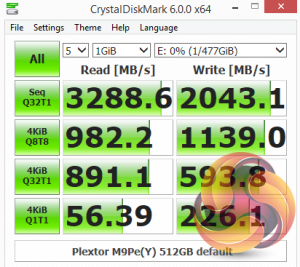
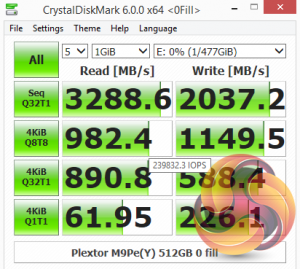
The 3D TLC NAND equipped 512GB M9Pe(Y) isn't quite as fast as the previous generation MLC equipped M8PeG but there's not a lot in it in terms of read performance, although the gap is bigger in terms of writes. Even so it's still a quick drive.
The ATTO Disk Benchmark performance measurement tool is compatible with Microsoft Windows. Measure your storage systems performance with various transfer sizes and test lengths for reads and writes. Several options are available to customize your performance measurement including queue depth, overlapped I/O and even a comparison mode with the option to run continuously.
Use ATTO Disk Benchmark to test any manufacturers RAID controllers, storage controllers, host adapters, hard drives and SSD drives and notice that ATTO products will consistently provide the highest level of performance to your storage.
Once again we are upgrading which ATTO version we are using for NVMe drives so have included the result screenshot from the new version.
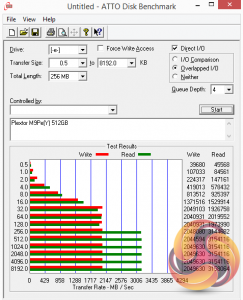
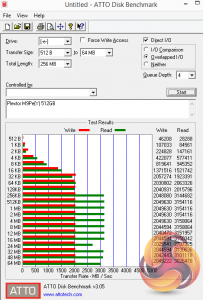
Plextor's official Sequential read/write speeds for the 512GB M9Pe(Y) are up to 3,200MB/s and 2,000MB/s respectively. When tested with the ATTO benchmark the review drive didn't quite hit the maximum read figure but got pretty close at 3,154MB/s while the tested write figure bested the official one at 2,049MB/s.
AS SSD is a great free tool designed just for benching Solid State Drives. It performs an array of sequential read and write tests, as well as random read and write tests with sequential access times over a portion of the drive. AS SSD includes a sub suite of benchmarks with various file pattern algorithms but this is difficult in trying to judge accurate performance figures.
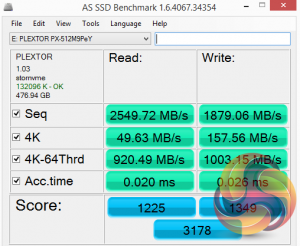
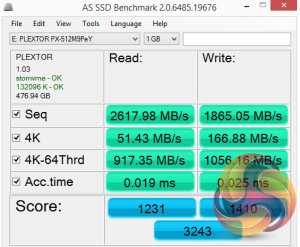
The drive performs well in the more stringent AS SSD test. Its write score of 1349 is the second highest we have seen from a consumer NVMe drive to date.
IOMeter is another open source synthetic benchmarking tool which is able to simulate the various loads placed on hard drive and solid state drive technology.
We've added 128KB Sequential read/write, 4K random read/write & 4K 70/30 mixed tests at a range of queue depths to our original 4K random read/write test.
There are many ways to measure the IOPS performance of a Solid State Drive, so our results will sometimes differ from manufacturer’s quoted ratings.
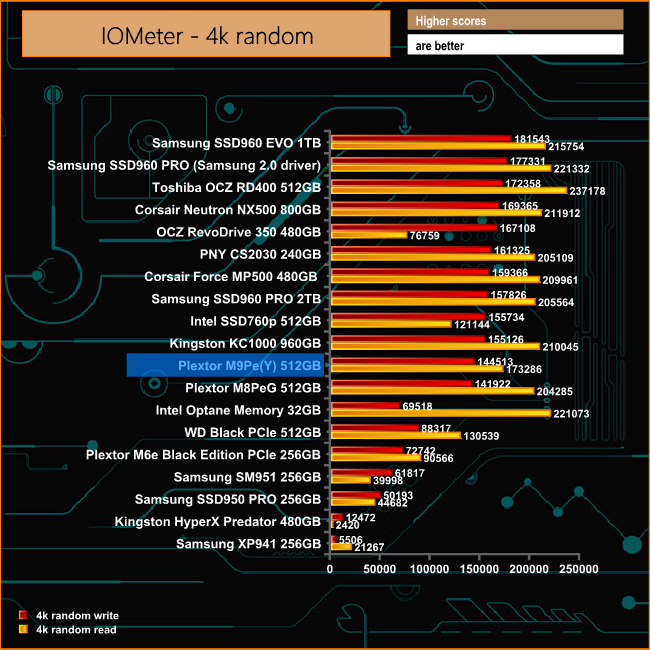
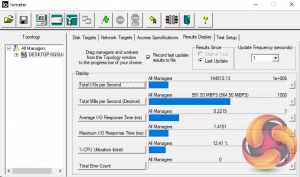
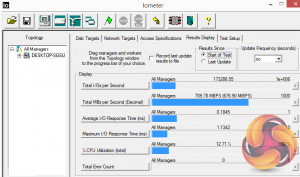
In our 4K Random read/write test, the 3D TLC NAND equipped M9Pe(Y) gave a write result of 144,513 IOPS outpacing the previous generation's M8PeG which uses MLC NAND. However when it came to read performance the results were reversed.
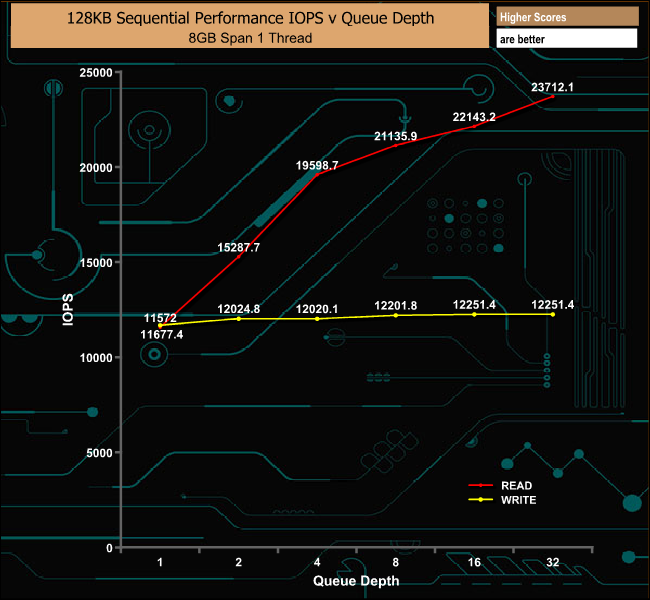
In our 128KB Sequential Read test the drive got very close to Plextor's maximum quoted transfer rate of 3,200MB/s at 3,133.97MB/s. The write performance was a little better than the official 2,000MB/s at 2,095.81MB/s.
When it comes to 4K Random Reads the performance shows a steady increase as the queue depth deepens delivering 196,045 IOPS at a QD of 32.
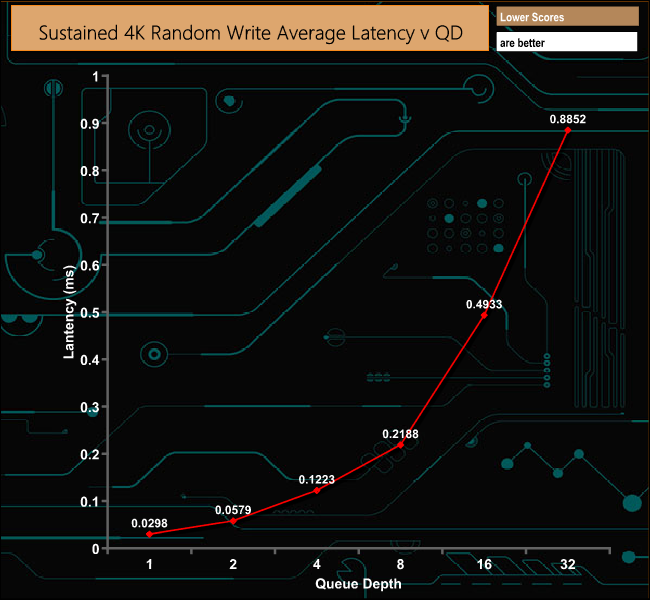
Random 4K write performance shows a couple of dips in performance as the queue depth deepens, first at a QD of 4 and then again at a QD of 16. On both occasions the drive recovers, to finish the test run at 144,319 IOPS at the QD32 mark.
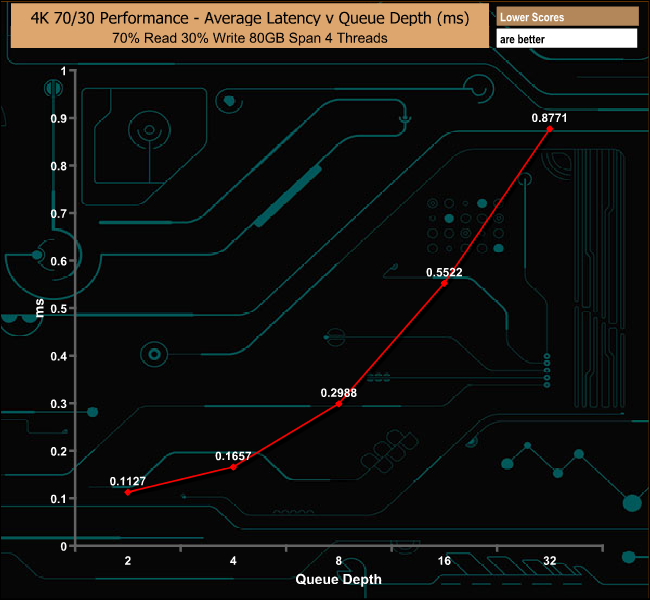
The Plextor M9Pe(Y) delivers pretty good performance in our 70/30 mixed test delivering 599.14MB/s at a queue depth of 32.
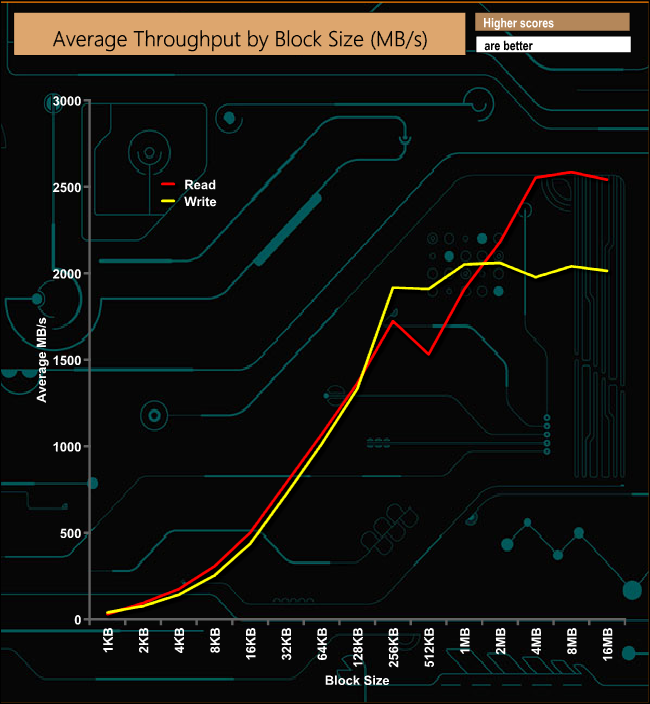
In our throughput test, there was a drop in read performance between the 256KB and 512KB block size but the drive recovered very quickly to peak at 2,584.02MB/s at the 8MB block size. Write performance peaks at the 2MB block size at 2,059.08MB/s before dropping back to finish the test at 2,013.73MB/s.
Futuremark’s PCMark 8 is a very good all round system benchmark but it’s Storage Consistency Test takes it to whole new level when testing SSD drives. It runs through four phases; Preconditioning, Degradation, Steady State, Recovery and finally Clean Up. During the Degradation, Steady State and Recovery phases it runs performance tests using the 10 software programs that form the backbone of PCMark 8; Adobe After Effects, Illustrator, InDesign, Photoshop Heavy and Photoshop Light, Microsoft Excel, PowerPoint, Word, Battlefield 3 and World of Warcraft. With some 18 phases of testing, this test can take many hours to run.
Preconditioning
The drive is written sequentially through up to the reported capacity with random data, write size of 256 × 512 = 131,072 bytes. This is done twice.
Degradation
Run writes of random size between 8 × 512 and 2048 × 512 bytes on random offsets for 10 minutes. It then runs a performance test. These two actions are then repeated 8 times and on each pass the duration of random writes is increased by 5 minutes.
Steady State
Run writes of random size between 8 × 512 and 2048 × 512 bytes on random offsets for final duration achieved in degradation phase. A performance test is then run. These actions are then re-run five times.
Recovery
The drive is idled for 5 minutes. Then a performance test is run. These actions are then repeated five times.
Clean Up
The drive is written through sequentially up to the reported capacity with zero data, write size of 256 × 512 = 131,072 bytes.
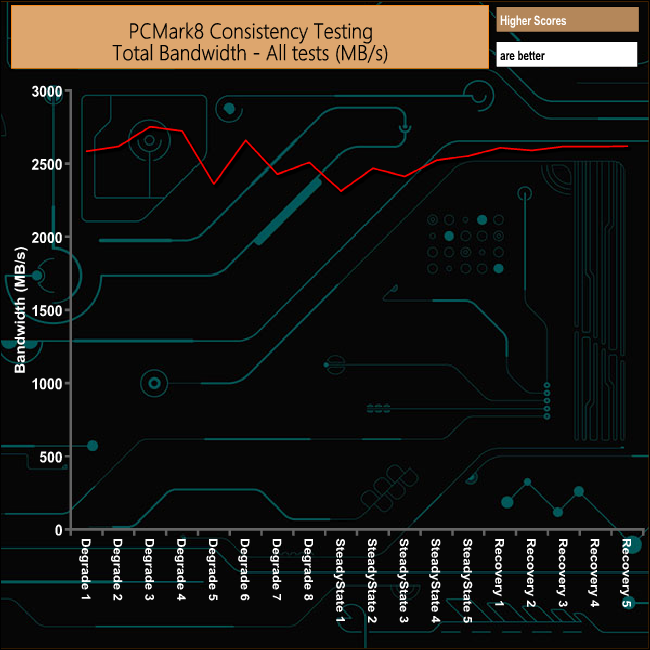
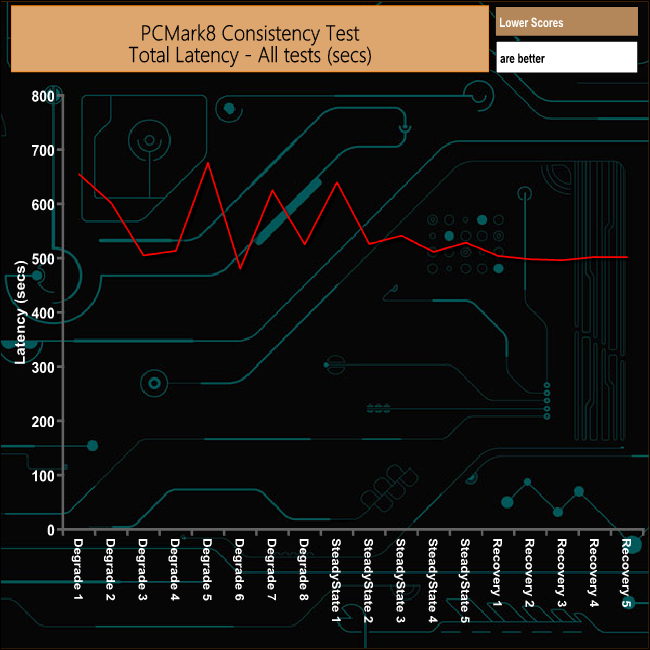
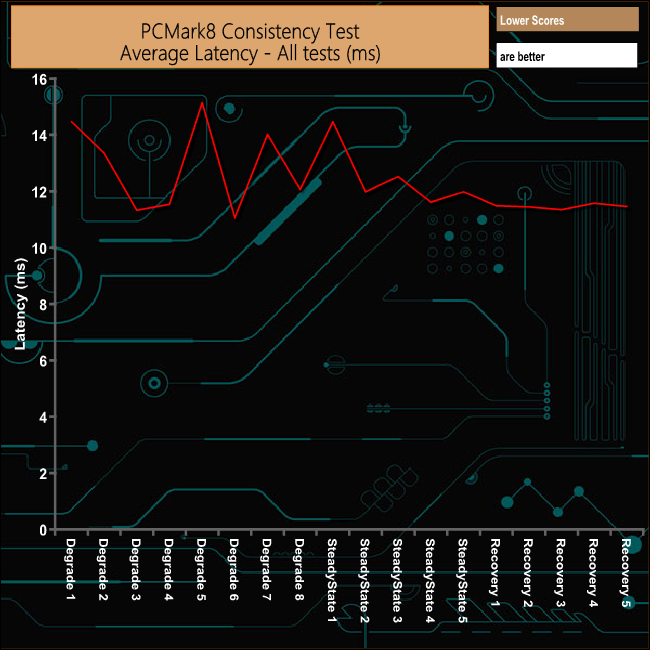
Plextor's M9Pe(Y) doesn't handle the stresses of PCM8 Consistency test very well with high latency's and the corresponding low bandwidths throughout the test.
PCMark 8’s Consistency test provides a huge amount of performance data, so here we’ve looked a little closer at how the M9Pe(Y) performs in each of the benchmarks test suites.
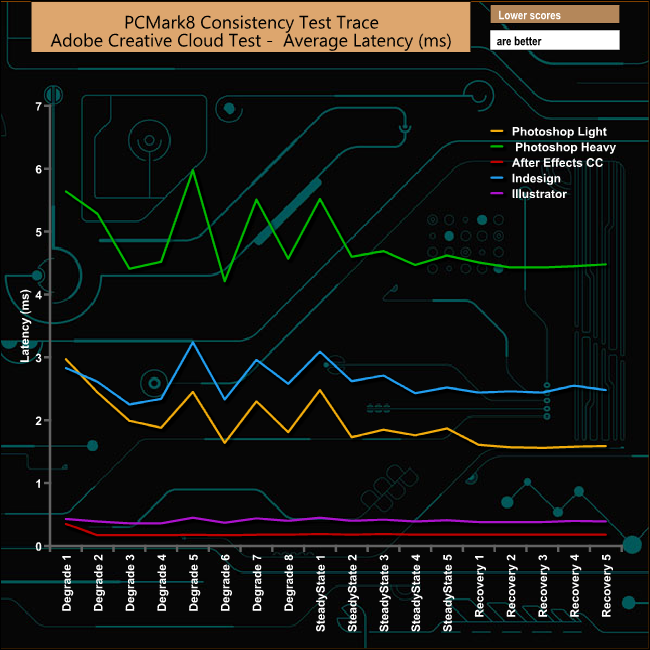
The drive really suffers through the Photoshop Light, Photoshop Heavy and Indesign tests. The performance does improve during the After Effects CC and Illustrator test runs.
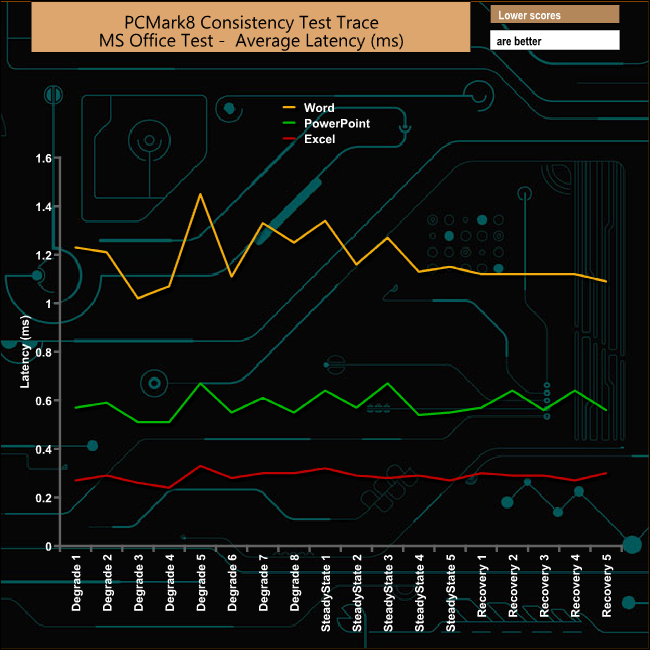
When it comes to the Microsoft Office test traces the drive's performance does pick up but only for the Excel and Powerpoint traces as the Word trace causes it problems.
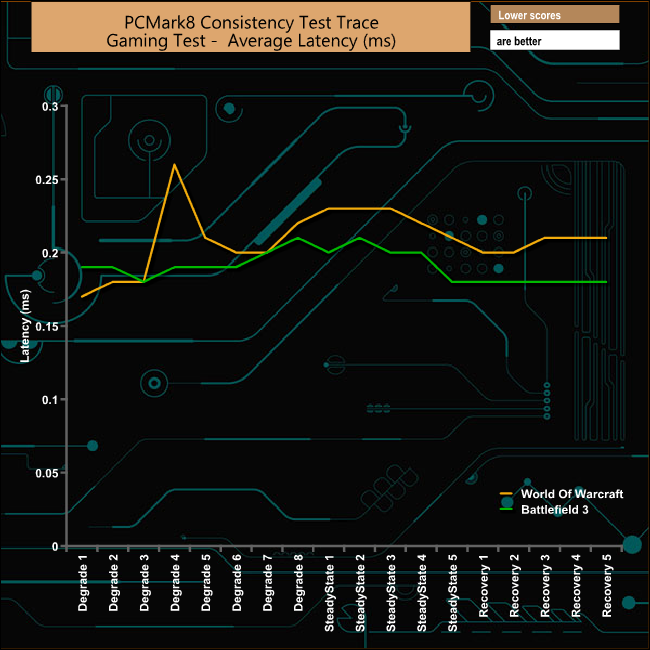
Unlike the Adobe CC and Microsoft Office tests, the drive handles the two gaming traces very well indeed.
Just like the Consistency test, PCMark 8’s standard Storage test also saves a large amount of performance data. The default test runs through the test suite of 10 applications three times. Here we show the total bandwidth performance for each of the individual test suites for the third and final benchmark run.
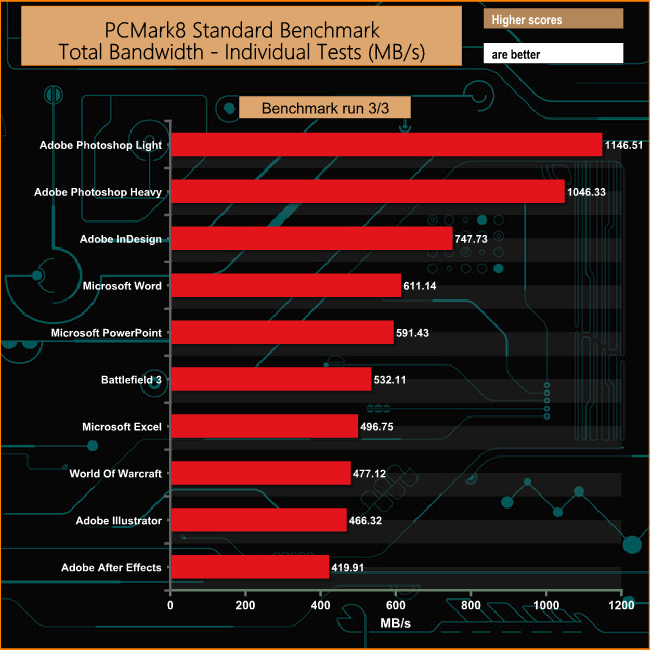
While the drive struggled with the PCM8 Consistency test, it dealt with the standard PCMark8 very well, particularly the two Photoshop tests with bandwidths of 1,146.51MB/s for Photoshop Light and 1,046.33MB/s for Photoshop Heavy. Although the After Effects test is the slowest, as it usually is, its bandwidth result for the third and final run is still above 400MB/s which is very good.
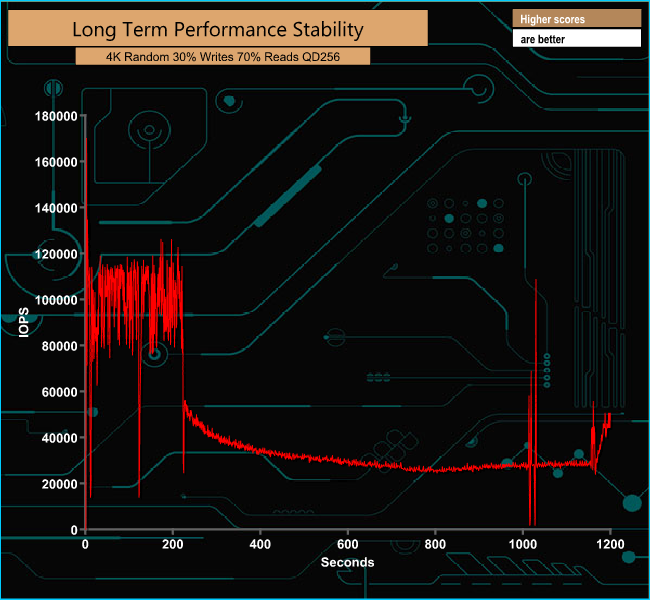
For the long term performance stability test, we set the drive up to run a 20-minute 4K random test with a 30% write, 70% read split, at a Queue Depth of 256 over the entire disk. The 512GB version of the M9Pe(Y) averaged 43,735 IOPS for the test with a performance stability of 41%.
To test real life performance of a drive we use a mix of folder/file types and by using the FastCopy utility (which gives a time as well as MB/s result) we record the performance of drive reading from & writing to a 256GB Samsung SSD850 PRO.
100GB data file.
60GB iso image.
60GB Steam folder – 29,521 files.
50GB File folder – 28,523 files.
12GB Movie folder – 24 files (mix of Blu-ray and 4K files).
10GB Photo folder – 621 files (mix of .png, raw and .jpeg images).
10GB Audio folder – 1,483 files (mix of mp3 and .flac files).
5GB (1.5bn pixel) photo.
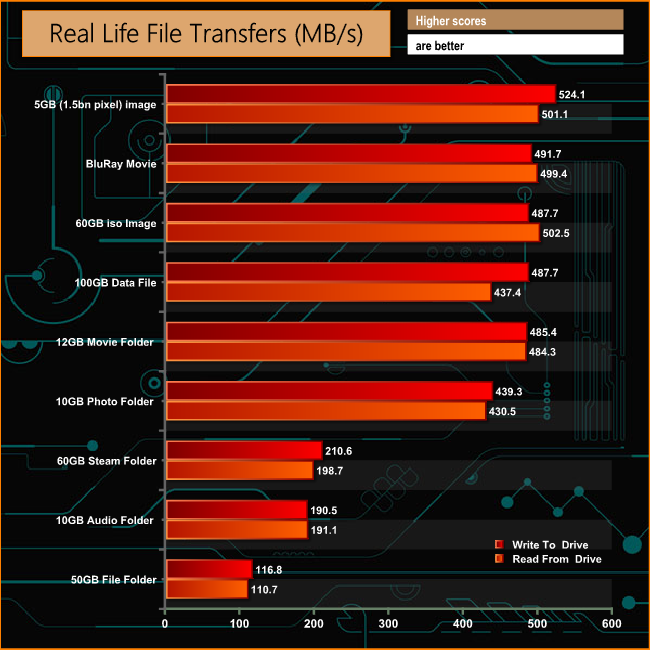
The drive is much happier dealing with large file sizes than it is with the small bity files of everyday use.
The last Plextor NVMe drive we looked at was one the of the M8 family using planer MLC NAND. The new M9 series of drives uses the latest Toshiba BiCS3 64-layer 3D TLC NAND but using the same Marvell 88SS1093 controller as the M8.
As before the drive comes in three formats, well technically two as there are two M.2 models, one with a heatsink, the M9Pe(G) and one without, the M9PeGN. The other drive is the HHHL (Half Height Half Length) M9Pe(Y). Capacity wise there are just three for all three versions of the M9; 256GB, 512GB and the flagship 1TB drives.
Using the ATTO benchmark we got close to Plextor's maximum quoted Sequential read figure of 3,200MB/s at 3,154MB/s while the tested write result of 2,049MB/s was slightly better than the official figure of 2,000MB/s.
The quoted official Random 4K performance for the drive is up to 340,000 IOPS for reads and 280,000 IOPS for writes. With our test system we couldn’t get close to those numbers but reads of 196,045 IOPS at a queue depth of 32 and writes of 144,319 IOPS at the same QD are solid numbers for a mainstream drive.
RGB lighting for cases, fans, memory has been around for a while but now we have the first RGB SSD, yep a drive with a funky light show built in. Power up the M9Pe(Y) and it displays Red in a panel along the edge of the heatsink, and then when in standby it slowly cycles through its range of colours. Once the drive is actively reading or writing then you get the full RGB effect. It your're not a fan of RGB then tough, because at the time this review was written there is no way of turning it off. Hopefully some kind of control for it will be built into a future version of Plextor's Plextool management software.
Talking of the Plextool software, at the time of writing this review the utility doesn't support the M9 series but that should change with the next refresh of the software.
Pros
- Three versions.
- Overall Performance.
- RGB.
Cons
- At the time of writing no Plextool support.
- No control over RGB.
- Not easy to find.
Kitguru says: Plextor's M9 series is a worthy successor to the previous generation M8 bringing 64-layer 3D TLC NAND to Plextor's NVMe line-up. In addition the fact that it comes in two M.2 versions as well as the HHHL (Half Height Half Length) M9Pe(Y) makes it a very useful drive.
Be sure to check out our sponsors store EKWB here
 KitGuru KitGuru.net – Tech News | Hardware News | Hardware Reviews | IOS | Mobile | Gaming | Graphics Cards
KitGuru KitGuru.net – Tech News | Hardware News | Hardware Reviews | IOS | Mobile | Gaming | Graphics Cards


